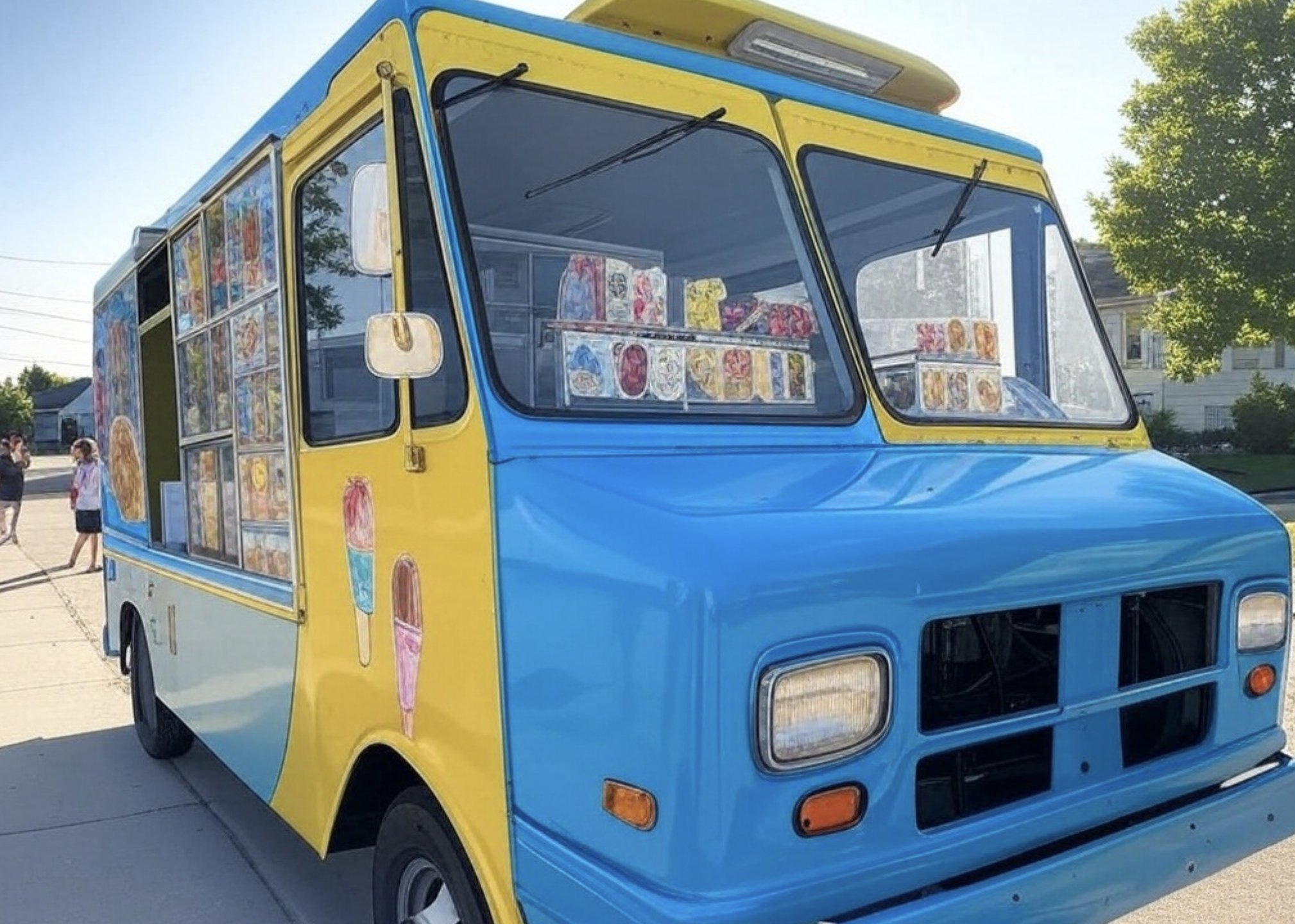Ice Cream Business Profit Calculator
Ice Cream Business Profit Calculator
Estimate sales, costs, and profitability for your ice cream shop or truck with seasonal adjustments and 5-year projections.
How to Use the Ice Cream Profit Calculator
This calculator helps ice cream shop owners and food truck operators accurately project their potential profits by calculating ingredient costs, operational expenses, and applying seasonal adjustments. Whether you're planning to open a new ice cream business or optimize an existing one, this calculator will provide valuable insights for your business planning.
After you determine the profitability of your ice cream business model, you can easily save the data by copying and pasting the results, or downloading it as a text file to include in your business plan.
Step 1: Enter Menu Items
Begin by entering details for each menu item you plan to sell:
- Product name (e.g., "Scoop", "Sundae", "Milkshake")
- Price per unit
- Estimated units sold per day
- Cost of ingredients per serving
- Packaging costs per serving
You can add multiple menu items to create a comprehensive business model. The calculator will analyze each product's contribution to your overall profitability.
Step 2: Configure Operational Details
Set your operational parameters:
- Days open per week
- Months open per year (seasonal businesses can adjust accordingly)
- Waste percentage (typical ice cream waste ranges from 2-5%)
Step 3: Enter Your Business Expenses
Input your monthly fixed costs:
- Labor expenses
- Lease or rent payments
- Utility costs
- Additional expenses (marketing, insurance, etc.)
The calculator allows you to add custom expense categories to ensure your business model is complete and accurate.
Step 4: Calculate and Analyze Results
Click "Calculate Ice Cream Profit" to generate detailed projections, including:
- Daily, monthly, and annual sales figures
- Profit per unit for each menu item
- 5-year business projection with industry survival milestones
- Seasonal monthly projection accounting for high and low seasons
- Detailed expense breakdown

Step 5: Detailed Walkthrough with Example
Let's walk through a complete example to show you exactly how the calculator works. I'll use a simple ice cream shop model with two menu items:
Menu Items
Item 1: Single Scoop
- Price per Unit: $5.00
- Units Sold per Day: 80
- Cost of Ingredients: $0.90
- Packaging Costs: $0.35
Daily Revenue: 80 × $5.00 = $400.00
Daily Cost: 80 × ($0.90 + $0.35) = $100.00
Item 1: Sundae
- Price per Unit: $7.50
- Units Sold per Day: 40
- Cost of Ingredients: $1.50
- Packaging Costs: $0.50
Daily Revenue: 40 × $7.50 = $300.00
Daily Cost: 40 × ($1.50 + $0.50) = $80.00
Operational Details
- Days Open per Week: 7
- Months Open per Year: 12
- Waste Percentage: 2.5%
Monthly Expenses
- Labor: $5,000
- Lease: $3,500
- Utilities: $600
- Marketing: $400
Calculation Results
Total Daily Sales: $400.00 + $300.00 = $700.00
Total Daily Ingredient Cost: $100.00 + $80.00 = $180.00
Waste Cost (2.5%): $180.00 × 0.025 = $4.50
Total Daily Cost: $184.50
Daily Fixed Costs: ($5,000 + $3,500 + $600 + $400) ÷ 30 = $316.67
Daily Profit: $700.00 - $184.50 - $316.67 = $198.83
Monthly Sales: $700.00 × 30 = $21,000.00
Annual Sales: $21,000.00 × 12 = $252,000.00

Understanding Seasonal Adjustments
Ice cream sales typically follow seasonal patterns. The calculator automatically adjusts your projected revenue based on the Seasona Monthly Projection chart in the results section to provide a more realistic view of monthly sales.
| Season | Months | Sales Factor |
|---|---|---|
| Winter | December, January, February | 0.6 (40% decrease) |
| Spring | March, April, May | 0.9 (10% decrease) |
| Summer | June, July, August | 1.3 (30% increase) |
| Fall | September, October, November | 0.8 (20% decrease) |
These factors help provide a more realistic projection, especially for ice cream businesses that face significant seasonal fluctuations.
Tips for Accurate Profit Projections
- Be conservative with sales estimates: It's better to underestimate sales and be pleasantly surprised than to overestimate and face financial challenges.
- Account for all costs: Include every expense, no matter how small. Little costs add up quickly in food service businesses.
- Consider location factors: High-traffic areas may generate more sales but typically come with higher rent costs.
- Plan for equipment maintenance: Ice cream machines require regular maintenance; factor these costs into your projections.
- Update costs regularly: Ingredient prices, especially dairy, can fluctuate significantly. Review and update your pricing regularly.
Typical Profit Margins in the Ice Cream Industry
Ice cream businesses typically maintain gross profit margins between 60-70% on product costs. However, when accounting for all operating expenses, net profit margins of 10-25% are more common. Here's how profit margins typically break down:

| Business Type | Gross Margin | Net Profit Margin |
|---|---|---|
| Ice Cream Shop (Premium) | 65-75% | 15-25% |
| Ice Cream Shop (Standard) | 60-70% | 10-20% |
| Ice Cream Truck | 55-65% | 15-30% |
| Ice Cream Cart/Kiosk | 60-70% | 20-35% |
Business Survival Statistics
The ice cream industry faces the same challenges as other food service businesses. According to industry data from LimePack:
- Approximately 20% of ice cream shops fail within their first year of operation.
- Around 50% don't reach their five-year anniversary.
- Businesses that survive beyond 5 years have significantly better long-term prospects.
The calculator incorporates these industry milestones into the 5-year projection chart to help you visualize critical survival thresholds.
Key Success Factors
Profitable ice cream businesses typically excel in these areas:
- Location: High foot traffic areas with good visibility.
- Product quality: Consistently excellent ice cream that brings customers back.
- Menu innovation: Regular introduction of new flavors and seasonal specialties.
- Operational efficiency: Tight control of labor costs and waste management.
- Marketing: Effective local promotion and social media presence.
Common Expenses in Ice Cream Businesses
When planning your ice cream business, be sure to account for all these typical expenses.
| Expense Category | Examples | Typical % of Revenue |
|---|---|---|
| Cost of Goods Sold | Ice cream ingredients, toppings, cones, packaging | 30-40% |
| Labor | Staff wages, benefits, training | 25-35% |
| Occupancy | Rent/lease, property taxes, common area maintenance | 10-15% |
| Utilities | Electricity, water, gas, internet | 3-7% |
| Marketing | Advertising, promotions, social media | 2-5% |
| Insurance | Liability, property, workers' compensation | 1-3% |
| Equipment | Maintenance, repairs, replacements | 2-4% |
How the Ice Cream Profit Calculator Works
This calculator uses standard business accounting methods to project revenue, expenses, and profit for ice cream businesses. The calculations follow established financial modeling practices with adjustments specific to the ice cream industry.
Core Financial Calculations
| Metric | Formula | Example |
|---|---|---|
| Daily Revenue | Sum(Price × Units Sold) for all menu items | $6 × 50 scoops = $300/day |
| Daily COGS | Sum((Ingredient Cost + Packaging Cost) × Units Sold × (1 + Waste %)) for all menu items | ($1.00 + $0.45) × 50 × 1.025 = $74.31/day |
| Monthly Revenue | Daily Revenue × Days Open × 4.33 (weeks per month) | $300 × 7 × 4.33 = $9,093/month |
| Monthly Fixed Expenses | Sum of all monthly expenses (Labor, Lease, etc.) | $5,000 + $4,000 = $9,000/month |
| Monthly Profit | Monthly Revenue - Monthly COGS - Monthly Fixed Expenses | $9,093 - $2,251 - $9,000 = -$2,158/month |
| Annual Values | Monthly Value × Months Open per Year | -$2,158 × 12 = -$25,896/year |
Unit Economics
The profit per unit calculation focuses on the direct costs associated with each menu item:
For example, a $6 scoop with $1.00 in ingredients, $0.45 in packaging, and 2.5% waste would have:
- Direct Cost = ($1.00 + $0.45) × 1.025 = $1.49
- Profit Per Unit = $6.00 - $1.49 = $4.51
- Margin = ($4.51 / $6.00) × 100% = 75.2%
Growth Projections
The 5-year projection applies your specified growth rates annually:
All calculated values are meant as projections based on the inputs provided. Actual business performance may vary due to market conditions, execution, and other factors not captured in these calculations.
Using Calculator Results in Your Business Plan
The results from this calculator provide valuable data for your business plan. Here's how to effectively use this information:
Financial Projections
Include the following elements in your ice cream business plan's financial section:
- Projected Revenue: Use the daily, monthly, and annual sales figures.
- Cost Structure: Include the detailed expense breakdown.
- Profit Margins: Highlight your profit per unit for each menu item.
- Seasonal Adjustments: Incorporate the monthly projection data to show understanding of seasonal fluctuations.
- Long-term Outlook: Use the 5-year projection to demonstrate your growth strategy and sustainability.
Run the calculator multiple times with different scenarios to understand how changes in key variables affect your profitability. Try higher sales with lower costs. Lower sales with higher costs to see how much wiggle room there is in your business plan.
Breakeven Analysis
Use the calculator to determine your breakeven point—the sales volume needed to cover all costs. This information is crucial for setting realistic goals and knowing how many scoops or soft-serve you need to sell each week to cover costs.
I suggest auditing your menu quarterly. Track which products sell well and which ones don't perform as expected. A focused menu with fewer, high-performing items often outperforms one with too many choices. Replace underperforming products with new offerings that match current trends or highlight seasonal ingredients.
Finally, remember that ice cream businesses thrive on creating memorable experiences. While this calculator focuses on the financial aspects of your business, the quality of your product and customer service will ultimately determine your long-term success. By combining solid financial planning with exceptional product quality, you'll build an ice cream business that delights customers and generates sustainable profits.
